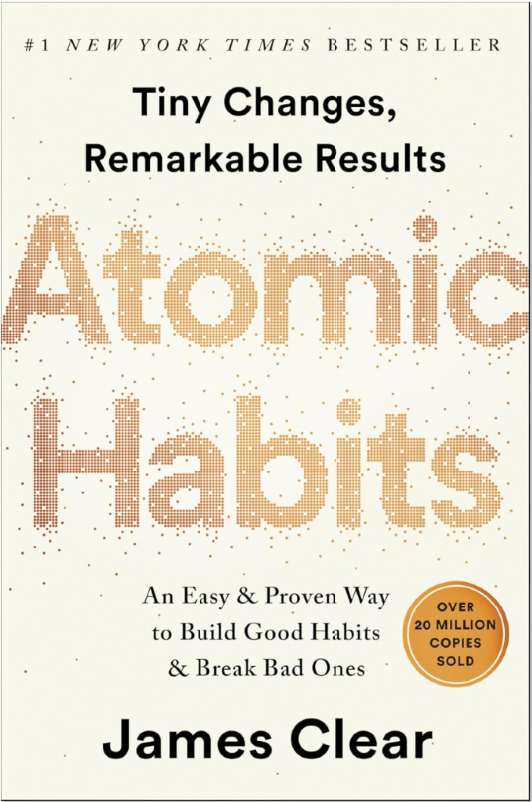By James Clear
James Clear’s Atomic Habits is a compelling and highly practical guide to personal transformation through small, incremental changes. Rather than relying on willpower, motivation, or sweeping life overhauls, Clear makes the case for tiny, daily improvements—what he calls “atomic habits”—as the most effective way to achieve lasting success. Drawing from scientific research in psychology, neuroscience, and behavioral economics, this book has become a modern classic in the self-help and productivity genre. But how well does it hold up under closer examination? Let’s explore the strengths and shortcomings of this widely celebrated work.
Summary of the Book
Atomic Habits is based on the idea that small changes compound over time, much like compound interest in finance. Clear argues that if you improve just 1% every day, those gains will add up significantly in the long term. He breaks down habit formation into a four-step process: Cue, Craving, Response, and Reward. These form the backbone of his Four Laws of Behavior Change:
- Make it Obvious
- Make it Attractive
- Make it Easy
- Make it Satisfying
Each of these laws helps you build good habits or break bad ones by working with, rather than against, your natural tendencies.
Pros
1. Actionable Advice
One of the biggest strengths of Atomic Habits is its practicality. Clear doesn’t just theorize about habits—he gives readers clear steps to implement them. Techniques like habit stacking (pairing a new habit with an existing one) or the two-minute rule (start with a habit that takes less than two minutes) are easy to understand and apply.
2. Strong Scientific Foundation
The book is grounded in solid research. Clear draws from psychological studies and real-world examples to support his points, without overwhelming the reader with jargon. This balance makes it intellectually credible while remaining highly accessible.
3. Clear and Engaging Writing Style
James Clear lives up to his name—his prose is lucid, engaging, and concise. He uses real-life anecdotes, including his own recovery from a severe injury, to humanize the concepts. The writing is structured in digestible chapters, each ending with key takeaways that summarize the core messages.
4. Emphasis on Identity Change
Perhaps the most profound idea in Atomic Habits is that lasting behavioral change comes not from setting goals, but from changing your identity. Instead of trying to run a marathon, you become a person who runs. This shift from outcome-based habits to identity-based habits is a powerful psychological tool for long-term change.
5. Versatile Applications
Whether you’re trying to exercise more, quit smoking, read daily, or become more organized, the strategies in this book can be applied to almost any area of life. Business leaders, students, parents, athletes, and creatives will all find relevant examples and applications.
6. Well-Organized and Visually Aided
Clear uses diagrams, summaries, and habit scorecards to help readers internalize the material. These visual aids, though simple, reinforce the key concepts and make the content more memorable.
Cons
1. Repetition of Ideas
While the core concepts are powerful, some readers may find the content slightly repetitive. The book emphasizes its main points again and again, sometimes with only minor variations. This repetition might be helpful for reinforcement, but for readers already familiar with habit literature, it can feel drawn out.
2. Lack of Depth in Some Scientific Explanations
Though Clear references research, the explanations are often simplified. He focuses more on application than theory, which is a strength for casual readers, but those looking for a more rigorous scientific breakdown may find it lacking. In contrast to books like The Power of Habit by Charles Duhigg, Atomic Habits doesn’t explore the neuroscience behind habits in much detail.
3. Not a One-Size-Fits-All Solution
While the book is highly motivational, some readers might find it hard to apply the strategies consistently, especially those dealing with more serious challenges such as addiction, trauma, or mental health issues. In such cases, professional support may be necessary, as behavioral tweaks alone might not suffice.
4. Heavy Focus on the Individual
The book assumes a high degree of personal agency. However, systemic or environmental factors that affect habit formation—like poverty, chronic stress, or lack of support—are not thoroughly addressed. This can make the advice feel overly optimistic or individualistic at times.
Why You Should Read Atomic Habits
If you’re looking to make a change in your life but feel overwhelmed or stuck, Atomic Habits offers a refreshingly doable approach. Its core message—that small habits, done consistently, lead to significant transformation—is both hopeful and empowering. Unlike many self-help books that rely on vague inspiration, this one gives you a toolkit. The Four Laws of Behavior Change, in particular, are simple yet versatile strategies that can be implemented immediately.
It’s also a great read for those who have tried and failed to stick to resolutions. Clear explains why habits fail and how to redesign them to work in your favor. The book is as much about self-understanding as it is about self-improvement.
Why You Might Skip It
If you’ve read other books on habits like The Power of Habit or are already well-versed in behavioral psychology, you may find Atomic Habits doesn’t offer significantly new insights. Additionally, if you’re expecting deep academic analysis or are dealing with more complex behavioral issues, the book may oversimplify your needs.
Conclusion
James Clear’s Atomic Habits is a must-read for anyone seeking practical strategies for self-improvement. Its strengths lie in its clarity, applicability, and motivational tone. While it may not dive deep into theory or account for all life circumstances, it provides a highly usable framework for change that has helped millions—and will likely continue to do so for years to come. If you’re ready to start small and think big, this book is a worthy guide.
Rating: 9/10
Recommended for: Anyone who wants to build better habits, increase productivity, or make lasting personal change without relying on constant motivation or willpower.
You can purchase it on Amazon if you like it.

